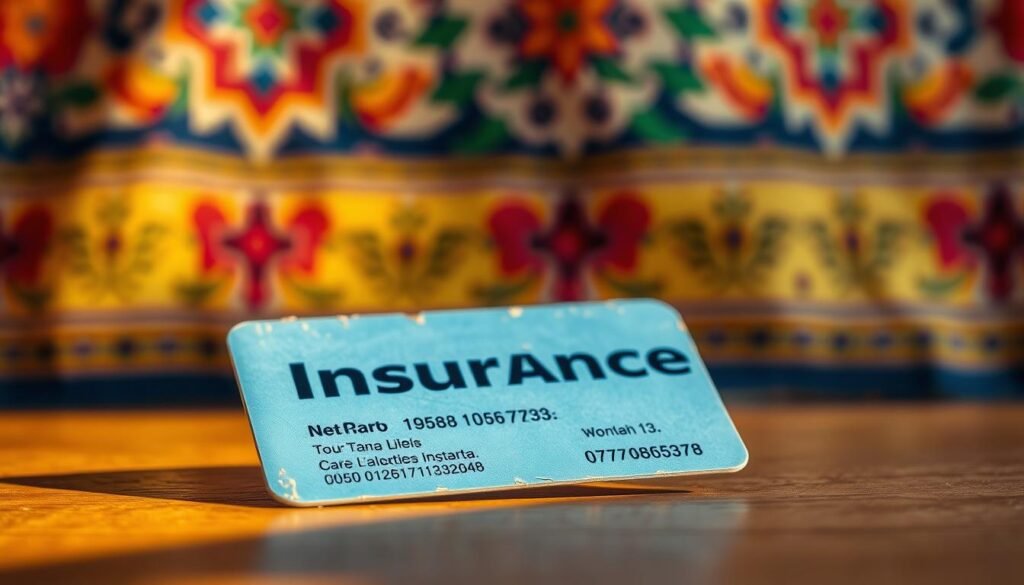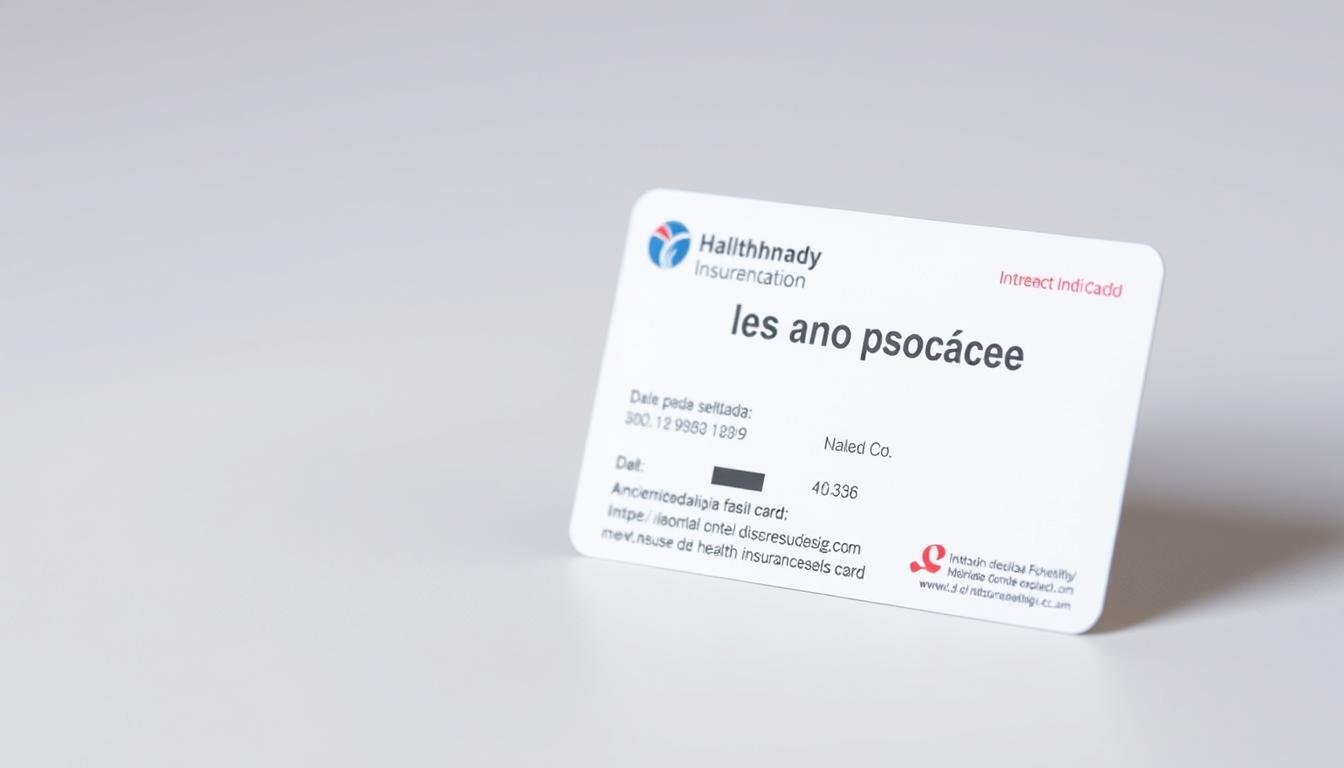Did you know that over 41 million people in the United States speak Spanish at home? If you’re among them or travel frequently to Spanish-speaking countries, having your vital documents translated can be a lifesaver.
Understanding your insurance card information in Spanish can be crucial when dealing with healthcare providers or navigating insurance systems abroad.
This guide will walk you through the essential Spanish terminology for your insurance card, helping you communicate effectively and avoid misunderstandings.
Key Takeaways
- Learn key Spanish terms related to your insurance card.
- Understand how to translate your insurance information for use abroad or with Spanish-speaking providers.
- Discover practical tips for pronunciation and usage.
- Enhance your ability to navigate healthcare and insurance systems in Spanish-speaking environments.
- Gain confidence in handling insurance matters, even with limited Spanish fluency.
Understanding Insurance Cards in the United States
In the U.S., insurance cards are essential documents that verify your insurance coverage. These cards contain vital information about your policy, serving as proof of insurance for various purposes.
To better understand the role of insurance cards, let’s first explore what they are and the different types available.
What Is an Insurance Card?
An insurance card is a document issued by your insurance provider, detailing your coverage and policy information. It typically includes your name, policy number, and the type of coverage you have.
This card is crucial for accessing insurance benefits, whether it’s for medical treatment, vehicle insurance claims, or other types of coverage.
Types of Insurance Cards
There are several types of insurance cards, each serving a specific purpose:
- Health Insurance Cards: These cards provide details about your medical coverage, including network restrictions and payment responsibilities.
- Auto Insurance Cards: Auto insurance cards prove that you meet the legal requirements for vehicle insurance and contain information needed in case of accidents or traffic stops.
- Other Types of Insurance Cards: This category includes dental insurance cards, vision insurance cards, prescription drug cards, and specialty insurance cards for specific coverages.
- Digital Insurance Cards: With the rise of digital technology, insurance cards are now available in digital formats, accessible through smartphone apps.
Understanding the different types of insurance cards and their uses can help you navigate the insurance system more effectively.
Insurance Card in Spanish: Basic Translation
If you’re trying to navigate the complexities of insurance in a Spanish-speaking context, starting with the translation of your insurance card is key. Understanding how to refer to your insurance card in Spanish can facilitate smoother interactions with healthcare providers, insurance companies, and other relevant entities.
The primary translation for “insurance card” in Spanish is “la tarjeta del seguro.” This term is widely understood across different Spanish-speaking countries and is a direct translation that conveys the concept effectively.
“La Tarjeta del Seguro”: The Primary Translation
“La tarjeta del seguro” is the most straightforward translation of “insurance card.” It is used universally in Spanish-speaking countries to refer to any card issued by an insurance company, whether it’s for health, auto, or other types of insurance. This term is clear and concise, making it easy for individuals to understand and use when needed.
Regional Variations in Spanish-Speaking Countries
While “la tarjeta del seguro” is universally understood, there are regional variations that you might encounter. For instance:
- In Spain, you might hear “tarjeta sanitaria” used specifically for health insurance cards, especially in reference to the national healthcare system.
- In some Latin American countries, “tarjeta de seguro médico” (medical insurance card) might be used to specifically reference health insurance.
- For auto insurance, you might hear “tarjeta de seguro de auto” or “tarjeta de seguro de coche” depending on the country (as “coche” is more common in Spain, while “auto” or “carro” is more common in Latin America).
Understanding these regional variations can help you navigate insurance matters more effectively when traveling to or dealing with insurance companies from specific Spanish-speaking countries.
Being aware of these differences can enhance your ability to communicate effectively and ensure that you have the necessary coverage when needed.
Essential Insurance Card Terminology in Spanish
Being able to comprehend the terms on your insurance card in Spanish can significantly ease interactions with healthcare providers or insurance companies. Your insurance card is a critical document that contains personal, policy, and coverage information, all of which you may need to understand or communicate in Spanish.
Personal Information Terms
Personal details on your insurance card are essential for identification purposes. In Spanish, you might need to understand or communicate terms such as “nombre del titular” (policyholder’s name), “número de identificación” (identification number), and “fecha de nacimiento” (date of birth). These terms are crucial for verifying your identity and ensuring that you receive the correct coverage.
Coverage and Policy Terms
Understanding your insurance coverage and policy details is vital. Terms like “tipo de plan” (type of plan), “beneficios” (benefits), and “deducible” (deductible) are commonly found on insurance cards or related documents. Knowing these terms in Spanish helps you grasp what is covered under your policy and what is not.
Important Dates and Numbers
Your insurance card contains several important dates and numbers that have specific Spanish translations. For instance, “fecha efectiva” or “fecha de vigencia” refers to the effective date when your coverage began. On the other hand, “fecha de vencimiento” or “válido hasta” indicates the expiration date of your card or policy. Additionally, “números de teléfono importantes” refers to the important phone numbers listed on your card, such as customer service. Other numerical information might include “límites de cobertura” (coverage limits) and “máximo de por vida” (lifetime maximum), particularly on health insurance cards.
- Fecha efectiva or fecha de vigencia: The date when your insurance coverage starts.
- Fecha de vencimiento or válido hasta: The expiration date of your insurance card or policy.
- Números de teléfono importantes: Important phone numbers, such as those for customer service or claims.
- Límites de cobertura: The maximum amount your insurance will pay for a particular service or treatment.
- Máximo de por vida: The lifetime maximum benefit your insurance will pay out.
How to Pronounce Insurance Card Terms in Spanish
Pronouncing insurance-related terms correctly in Spanish is crucial for clear communication, especially in medical or financial contexts. When you can accurately pronounce these terms, you’re more likely to be understood and build trust with Spanish-speaking individuals.
Pronunciation Fundamentals
To pronounce insurance card terms in Spanish, it’s essential to start with the basics. Spanish pronunciation is generally phonetic, meaning words are pronounced as they’re written. However, there are some key differences between Spanish and English pronunciation that you should be aware of. For instance, the Spanish “c” and “z” are pronounced with a “th” sound in Spain, while in Latin America, they’re pronounced with an “s” sound.
Key Terms and Their Pronunciations
- La tarjeta del seguro (insurance card) – pronounced as “lah tar-heh-thah del seh-goo-roh” (Spain) or “lah tar-heh-tah del seh-goo-roh” (Latin America)
- Número de póliza (policy number) – pronounced as “noo-meh-roh deh po-lee-thah” (Spain) or “noo-meh-roh deh po-lee-sah” (Latin America)
- Fecha de vencimiento (expiration date) – pronounced as “feh-chah deh ven-see-mee-en-toh” (Spain) or “feh-chah deh ven-see-mee-en-toh” (Latin America)
Audio Resources and Practice Tips
To improve your pronunciation, it’s helpful to listen to native speakers. There are numerous online resources where you can hear native Spanish speakers pronounce insurance-related terms. You can utilize language learning apps like Duolingo, Babbel, and SpanishDict, which offer audio pronunciations of common Spanish words and phrases, including many insurance-related terms.
Some other valuable resources include YouTube tutorials specifically focused on medical or insurance Spanish. You can also practice by recording yourself saying the terms and comparing your pronunciation to native speakers. Don’t be afraid to ask for help; when in doubt about pronunciation, most Spanish speakers will appreciate your efforts and help correct your pronunciation if needed.
Reading Your Insurance Card in Spanish
When you receive your insurance card in Spanish, understanding its various components is crucial for navigating the healthcare system effectively. Your insurance card contains vital information about your coverage, and being able to read it is essential for accessing medical services.
The layout and content of insurance cards can vary, but most include similar sections. Understanding these sections will help you quickly identify your benefits and coverage levels.
Common Sections and Their Meanings
Most Spanish insurance cards include sections for personal information, policy details, and coverage information. The personal information section typically includes your name, date of birth, and policyholder information.
The policy details section may include the type of plan you have, such as “PPO” (Organización de Proveedores Preferidos) or “HMO” (Organización para el Mantenimiento de la Salud). Coverage information will outline what services are included under your plan.
Deciphering Codes and Abbreviations
Spanish insurance cards, like their English counterparts, often use codes and abbreviations to convey information efficiently. For example, “Tipo de Plan” or “Plan” may be abbreviated as mentioned earlier. Prescription coverage information might use abbreviations like “Rx,” which is universal across languages.
- Service categories might be abbreviated, such as “Cons.” for “Consulta” (office visit) or “Urg.” for “Urgencias” (emergency services).
- Understanding these codes and abbreviations will help you quickly identify your benefits and coverage levels when using your Spanish insurance card.
- Other abbreviations might include “Copago” (copayment) or “Deducible” (deductible).
By familiarizing yourself with these terms and abbreviations, you’ll be better equipped to navigate the healthcare system in Spanish-speaking settings.
Requesting an Insurance Card in Spanish

To get a new insurance card, you’ll need to know the right phrases and procedures to use when making your request in Spanish. This knowledge can make the process smoother for both you and your insurance provider.
Useful Phrases for Speaking with Insurance Representatives
When contacting your insurance company to request a new card, having some key phrases in Spanish can be very helpful. You can start by saying, “Escribo para solicitar una nueva tarjeta de seguro” (I am writing to request a new insurance card). Other useful phrases include “Necesito una copia de mi tarjeta de seguro” (I need a copy of my insurance card) and “¿Podría enviarme una nueva tarjeta de seguro?” (Could you send me a new insurance card?).
It’s also important to be prepared to provide your identifying information. You may need to say your full name, policy number, date of birth, and the address where you want the card sent. Practicing these phrases beforehand can make the process less stressful.
Sample Request Letters and Emails in Spanish
When making a written request for an insurance card, it’s essential to follow a formal structure. Begin with a proper salutation such as “Estimado Departamento de Servicio al Cliente” (Dear Customer Service Department). Clearly state your request early in the letter, using a phrase like “Escribo para solicitar una nueva tarjeta de seguro” (I am writing to request a new insurance card).
- Include your full name, policy number, date of birth, and the address where the card should be sent.
- Be sure to close with a formal phrase such as “Agradezco su atención a este asunto” (I appreciate your attention to this matter).
- End with “Atentamente” (Sincerely) before your signature.
By following these guidelines and using the provided phrases, you can effectively request a new insurance card in Spanish. Remember to keep your request clear and concise, and don’t hesitate to reach out if you need further assistance.
Spanish Insurance Card Examples by Type
Familiarizing yourself with the different insurance card types and their Spanish translations can simplify your insurance experience. Various insurance cards serve distinct purposes, and understanding their unique terminology is crucial for effective navigation.
Let’s explore some common types of insurance cards and their Spanish equivalents. Health insurance cards, for instance, are a crucial document for medical purposes.
Health Insurance Cards
Health insurance cards in Spanish are often referred to as “tarjeta de seguro médico” or “tarjeta sanitaria.” In Europe, the European Health Insurance Card is known as “Tarjeta Sanitaria Europea.” For more information on health insurance in Spain, you can visit AXA Global Healthcare.
These cards typically contain vital information such as the policyholder’s name, policy number, and coverage details.
Auto Insurance Cards
Auto insurance cards, or “tarjeta de seguro de automóvil,” are essential for drivers. They usually include the vehicle’s details, policy information, and the insurance provider’s contact information.
Other Insurance Cards
Beyond health and auto insurance, you may encounter other types of insurance cards in Spanish. Some examples include:
- Dental insurance cards (tarjeta de seguro dental) that list covered services under “Servicios Cubiertos” and may specify waiting periods as “Períodos de Espera.”
- Vision insurance cards (tarjeta de seguro de visión) that include information about exam coverage (“cobertura de exámenes“) and eyewear allowances (“asignación para anteojos“).
- Travel insurance cards (tarjeta de seguro de viaje) that often include emergency assistance numbers and coverage details for medical emergencies abroad.
Specialty insurance cards may use specific terminology related to their coverage area, such as “seguro de mascotas” (pet insurance) or “seguro de hogar” (home insurance). Understanding these different types of insurance cards and their Spanish terminology can help you navigate various insurance scenarios with confidence.
Using Your Insurance Card in Spanish-Speaking Settings

Your insurance card is a vital document, and knowing how to utilize it in Spanish-speaking contexts can significantly ease your interactions with healthcare providers or during insurance claims. Whether you’re receiving medical care or filing an auto insurance claim, being prepared can make a significant difference.
Medical Facilities and Your Insurance Card
When visiting medical facilities in Spanish-speaking areas, it’s essential to be prepared to communicate effectively about your insurance card. Start by ensuring you have a basic understanding of the key terms related to your insurance coverage. If you encounter any issues, don’t hesitate to ask questions like “¿Por qué no aceptan mi seguro?” (Why don’t you accept my insurance?) to clarify the situation.
For more complex discussions or if you need detailed explanations, consider seeking assistance from a professional translation service or asking your insurance company if they offer interpreter services. You can also ask the medical facility staff, “¿Hay alguien que hable inglés?” (Is there someone who speaks English?) to find someone who can assist you in your native language.
Filing Auto Insurance Claims
Filing an auto insurance claim in a Spanish-speaking environment involves similar preparation. Ensure you understand the necessary documentation and the process involved. If you face any challenges, having key phrases written down in Spanish can be helpful. You may also want to explore resources like related articles that discuss navigating complex situations with the right support.
Overcoming Common Challenges
Language barriers can complicate insurance matters, but there are strategies to overcome these challenges. Translation apps can provide immediate assistance, but having essential insurance phrases written down in advance is more reliable. If you encounter difficulties, don’t hesitate to seek help. Being proactive and prepared can significantly reduce stress and ensure that your insurance needs are met effectively.
Digital Insurance Cards and Spanish Language Options
In today’s digital age, accessing your insurance card in Spanish has become more convenient than ever. Many insurance companies now offer digital versions of insurance cards, making it easier for you to manage your insurance information.
One of the primary ways to access your digital insurance card in Spanish is through insurance apps. These apps are designed to provide a user-friendly interface that allows you to easily navigate and find the information you need.
Managing Insurance Apps in Spanish
To access your insurance card through an app, you typically need to download the app from your insurance provider, log in to your account, and navigate to the section where your insurance card is stored. Many apps offer a Spanish language option, which can usually be found in the settings or preferences section.
Key Features to Look for in Insurance Apps:
- Language options, including Spanish
- Easy navigation to your insurance card
- Secure login and account management
- Push notifications for important updates
Setting Language Preferences on Insurance Websites
Insurance company websites often provide an option to switch to Spanish, allowing you to view your insurance card and other documents in your preferred language. This can usually be done by clicking on a button labeled “Español” or a language icon.
Once you’ve switched to the Spanish version of the website, you can typically access your digital insurance card by logging into your account. Look for sections labeled “Mi Cuenta” (My Account) or “Documentos” (Documents) to find your insurance card.
- Look for a language toggle or “Español” button to switch to Spanish.
- Use the “Mi Cuenta” or “Documentos” section to access your insurance card.
- Update your communication preferences to receive all documents in Spanish.
- If you need help, use the “Ayuda” (Help) or “Contáctenos” (Contact Us) links.
Conclusion: Navigating Insurance in Spanish with Confidence
You’ve taken a significant step towards confidently managing your insurance needs in Spanish-speaking environments. Understanding your insurance card in Spanish opens up better access to services and reduces stress when dealing with insurance matters.
The key terms and phrases you’ve learned will help you communicate effectively about your insurance coverage with Spanish speakers. Remember, “la tarjeta del seguro” is the standard translation for “insurance card” and will be understood throughout the Spanish-speaking world.
To maximize the benefits, keep both physical and digital copies of your insurance card accessible. Consider having a Spanish translation of key terms ready if your card is only in English. With practice and the knowledge from this guide, you’ll navigate insurance matters in Spanish with greater confidence and fewer misunderstandings.
